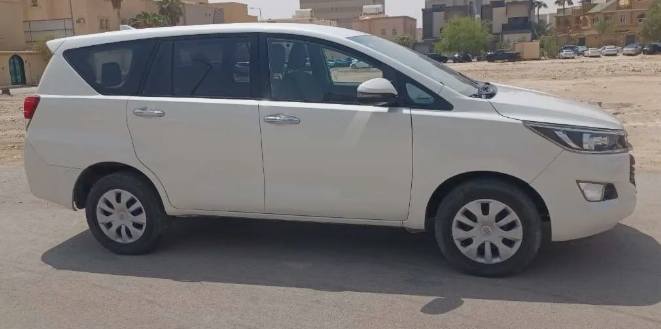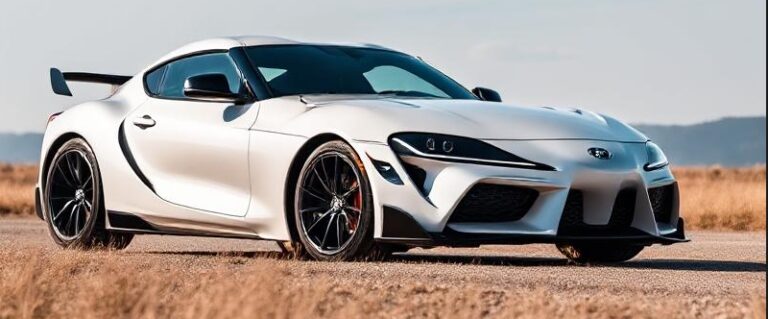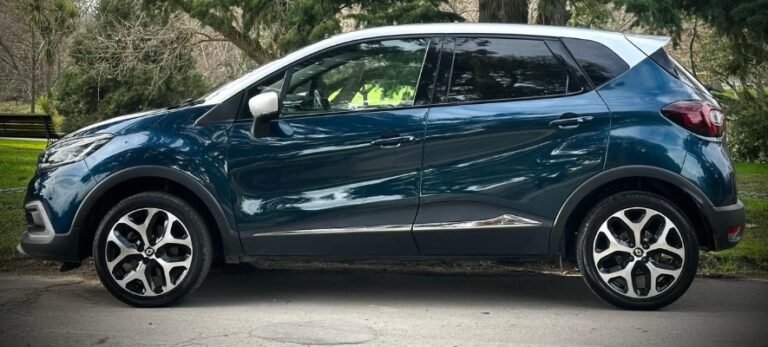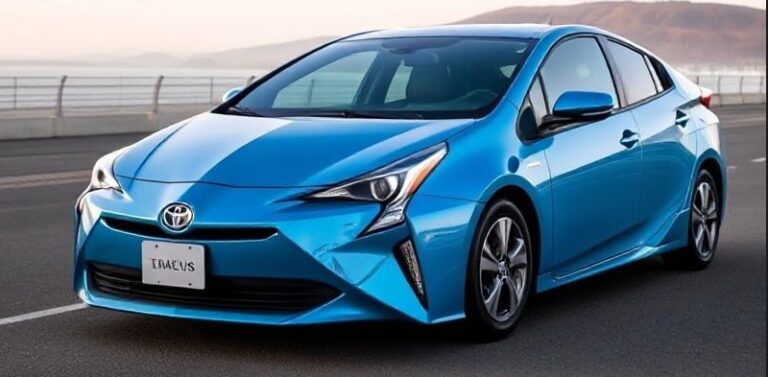A Tale of Practicality, Evolution, and Enduring Popularity – The Story of the Toyota Innova
The Toyota Innova. For many across Asia, it’s more than just a car; it’s a reliable workhorse, a comfortable family transporter, and a testament to astute engineering. Since its inception, the Innova has carved a significant niche in the automotive landscape, consistently prioritizing practicality, durability, and a user-friendly experience. This article delves into the fascinating evolution of the Toyota Innova, tracing its journey from its debut to its current iteration, highlighting the models, trim levels, and key developments that have cemented its enduring popularity.
The Genesis: A Need for a Versatile MPV (2004-2015) – First Generation (AN40)
The Toyota Innova was officially launched in late 2004, succeeding the venerable Kijang in Indonesia and the Tamaraw FX in the Philippines, vehicles that had already established Toyota’s reputation for sturdy utility vehicles in the region. The Innova was designed as a global platform MPV (Multi-Purpose Vehicle), with its development heavily influenced by the needs and preferences of emerging markets. The goal was to create a vehicle that was spacious enough for larger families, robust enough for varied road conditions, and economical enough to maintain.
The first generation, codenamed AN40, immediately distinguished itself with its monocoque body construction, a departure from the body-on-frame design of its predecessors. This engineering choice contributed to a more car-like ride, improved handling, and enhanced safety. The Innova also boasted a distinctive, modern design for its time, moving away from the boxy utilitarian look of older MPVs.
.

.
Engine Options:
The AN40 Innova offered a choice of gasoline and diesel engines, catering to different market demands and fuel preferences:
1TR-FE 2.0L VVT-i gasoline engine: This was a common choice, providing a balance of performance and fuel efficiency.
2KD-FTV 2.5L D-4D common rail turbo-diesel engine: Renowned for its torque and fuel economy, the diesel engine became a hugely popular option in many markets, especially for commercial use and long-distance travel.
Transmission Options:
5-speed manual transmission: The standard offering, prioritizing affordability and driver engagement.
4-speed automatic transmission: Available on higher trims, offering added convenience.
Key Trim Levels and Features (First Generation):
The Innova was typically offered in a tiered trim structure to cater to various budgets and feature preferences. While specific naming conventions varied slightly by market, common trim levels and their associated features included:
Base/J/E:
Focus on essential functionality and affordability.
Basic interior materials, often fabric upholstery.
Manual air conditioning.
Power windows and door locks might be optional or absent on the very base models.
Basic infotainment systems, often with a simple radio and CD player.
Steel wheels with wheel covers.
G/V (Mid-range):
Introduction of more creature comforts.
Improved interior trim and fabric quality.
Alloy wheels.
Power-adjustable side mirrors.
Rear air conditioning vents.
More advanced infotainment systems with touchscreens and better sound systems might appear on later iterations.
ABS (Anti-lock Braking System) and EBD (Electronic Brake-force Distribution) often became standard or available.
V/Q/VX (Top-tier):
The pinnacle of the first-generation Innova.
Premium interior materials, often with leather upholstery.
Automatic climate control.
Advanced infotainment systems with navigation (in later models).
Rear-seat entertainment systems.
Higher safety features like airbags (driver and passenger, potentially side airbags on some later or specific market models).
Fog lights.
Wood grain trim accents.
Mid-Cycle Facelifts (First Generation):
The first generation Innova received several mid-cycle updates to keep it competitive. These facelifts typically brought subtle exterior styling tweaks (grille, bumpers, headlights, taillights), interior enhancements (updated upholstery, new color schemes), and the introduction of newer technologies. Notably, safety features like ABS and airbags were gradually made more widely available or standard across more trims over the lifespan of the AN40.
Evolution of the Diesel Engine:
The 2.5L D-4D engine proved to be a real highlight. Early versions were known for their robust performance and excellent fuel efficiency. As the generation progressed, Toyota continued to refine this engine, sometimes improving power output and emissions control.
The Rise of the Second Generation: A More Sophisticated Innova (2015-Present) – Second Generation (AN140)
In 2015, Toyota unveiled the second-generation Innova, codenamed AN140. This marked a significant leap forward in design, engineering, and features. The new Innova adopted Toyota’s latest design language, featuring a more aggressive and sculpted exterior. The interior also received a substantial upgrade, with a focus on premium feel, improved ergonomics, and enhanced technology.
The underlying chassis remained a monocoque, but it was significantly re-engineered for better ride comfort, handling, and safety. Toyota also made substantial improvements to noise, vibration, and harshness (NVH) levels, making the cabin much quieter and more refined.
Engine Options (Second Generation):
The engine lineup saw updates and expansions:
1TR-FE 2.0L VVT-i gasoline engine: Continued from the first generation, refined for better efficiency and performance.
2GD-FTV 2.4L GD engine (turbo-diesel): This new-generation diesel engine replaced the older 2KD-FTV. It offered improved power, torque, and significantly better fuel efficiency and lower emissions. This engine became the powerhouse of the Innova in many markets.
1GD-FTV 2.8L GD engine (turbo-diesel): Introduced in select markets, this larger diesel engine provided even more power and torque, often reserved for higher-end trims or specific commercial applications.
Transmission Options (Second Generation):
5-speed manual transmission: Still offered for those who prefer it.
6-speed automatic transmission: A significant upgrade from the 4-speed auto of the previous generation, offering smoother shifts and better fuel economy. This became widely available, especially with the diesel engines.
Key Trim Levels and Features (Second Generation):
The trim structure continued to evolve, with more emphasis on technology and safety:
G/GX:
Entry-level models focused on practicality and value.
Standard manual air conditioning.
Infotainment systems with touchscreens became more common, often with Bluetooth connectivity and USB ports.
Fabric upholstery.
Steel wheels or basic alloy wheels.
Basic safety features like airbags and ABS.
V/VX:
Mid-range trims offering a good balance of comfort and features.
Automatic climate control.
Improved infotainment systems with enhanced connectivity.
Rear parking sensors.
Alloy wheels.
Higher quality interior materials.
Z/Q/V variants (Top-tier):
These were the flagship models, packed with premium features.
Leather upholstery.
Advanced infotainment systems with navigation and smartphone integration (Apple CarPlay, Android Auto).
Push-button start and Smart Entry.
LED projector headlights.
Enhanced safety suites, often including features like Vehicle Stability Control (VSC), Hill-start Assist Control (HAC), and potentially side curtain airbags.
Premium audio systems.
Reclining captain seats in the second row for enhanced comfort.
The Innova Crysta: A Premium Elevation (Launched at different times in various markets, often coinciding with the AN140 or as a distinct sub-model)
Perhaps the most significant evolution within the second generation was the introduction of the “Innova Crysta” sub-model in many key markets, starting around 2016. The Crysta was positioned as a more premium and upmarket version of the Innova, further blurring the lines between an MPV and a luxury vehicle.
The Crysta featured a bolder, more assertive front-end design with a larger, more intricate grille. The interior received a significant luxury upgrade, with higher-quality materials, more sophisticated dashboard designs, and an extensive list of premium features. The goal was to offer a more opulent experience while retaining the core practicality of the Innova.
Key Features of the Innova Crysta:
More powerful diesel engines (often the 2.8L 1GD-FTV).
Premium leather upholstery.
Larger, higher-resolution touchscreens with advanced navigation and smartphone integration.
Ambient lighting.
Power-adjustable driver’s seat.
Enhanced safety features, often including more airbags, VSC, HAC, and sometimes even cruise control.
Distinctive exterior styling elements like chrome accents and larger alloy wheels.
The Innova Hycross: Electrification and a New Platform (Launched in late 2022 in India, with other markets following)
The latest chapter in the Innova’s story is the Innova Hycross, marking a significant departure by introducing a strong hybrid powertrain and a new platform. Launched in markets like India in late 2022, the Hycross signals Toyota’s commitment to electrification and its evolution for a modern, environmentally conscious consumer.
While retaining the core practicality of its predecessors, the Hycross adopts a more SUV-like stance and design. It moves to Toyota’s TNGA-C platform (a modified version), which is typically used for smaller cars, but adapted here for a three-row vehicle.
This change contributes to improved driving dynamics and a more modern feel.
Engine Options (Innova Hycross):
2.0L Dynamic Force gasoline engine: A naturally aspirated engine paired with a hybrid system.
Toyota Hybrid System (THS): This is the star of the show, combining the gasoline engine with electric motors for impressive fuel efficiency and reduced emissions.
2.0L M20A-FKS Dynamic Force gasoline engine (non-hybrid): Available in some markets as a more affordable option.
Transmission Options (Innova Hycross):
e-CVT (electronic continuously variable transmission): Standard with the hybrid powertrain, delivering seamless acceleration and optimal efficiency.
CVT (Continuously Variable Transmission): Used with the non-hybrid gasoline engine.
Key Trim Levels and Features (Innova Hycross):
The Hycross aims to blend family practicality with cutting-edge technology and luxury:
G/GX:
Focus on hybrid efficiency and essential features.
Standard touchscreen infotainment with smartphone connectivity.
LED headlights.
Toyota Safety Sense (TSS) suite of advanced driver-assistance systems (ADAS) may be standard or optional depending on the market and trim.
VX/ZX/QX (Top-tier):
The most luxurious and technologically advanced Innova yet.
Premium leather upholstery.
Larger infotainment screens and digital instrument clusters.
Panoramic sunroof.
Advanced features like powered tailgate, captain seats with Ottoman functions, and an array of ADAS features from the Toyota Safety Sense suite (e.g., adaptive cruise control, lane departure alert, pre-collision system).
The QX variant is often the absolute top-spec, potentially offering exclusive features.
The Enduring Appeal of the Innova:
Throughout its evolution, the Toyota Innova has consistently delivered on its core promise: to be a reliable, practical, and comfortable vehicle for families and businesses. The transition from its utilitarian roots to the more sophisticated and even electrified Hycross demonstrates Toyota’s ability to adapt to changing market demands and technological advancements.
The Innova’s success can be attributed to several key factors:
Durability and Reliability: Toyota’s legendary build quality ensures that the Innova is a long-term investment, capable of withstanding the rigors of daily use and diverse road conditions.
Spaciousness and Versatility: The three-row seating configuration and flexible cargo space make it ideal for carrying passengers, luggage, or goods.
Comfort and Refinement: Each generation has seen improvements in ride quality, cabin insulation, and interior appointments, making journeys more enjoyable.
Fuel Efficiency: Particularly with its diesel engines and now its hybrid system, the Innova has consistently offered competitive fuel economy, a critical factor for many buyers.
Resale Value: Due to its reliability and demand, the Innova typically holds its value well in the used car market.
Adaptability: Toyota has masterfully adapted the Innova to suit regional tastes and preferences, offering different trims, engine options, and even specific sub-models like the Crysta to maximize its appeal.
The Toyota Innova’s journey is a compelling narrative of evolution driven by a deep understanding of its core customer base. From its humble beginnings as a robust family workhorse to its current sophisticated and even hybrid-powered iterations, the Innova continues to prove that practicality, reliability, and constant improvement are the cornerstones of enduring automotive success. It remains a benchmark in the MPV segment, a testament to Toyota’s engineering prowess and its unwavering commitment to delivering vehicles that truly serve their purpose.







